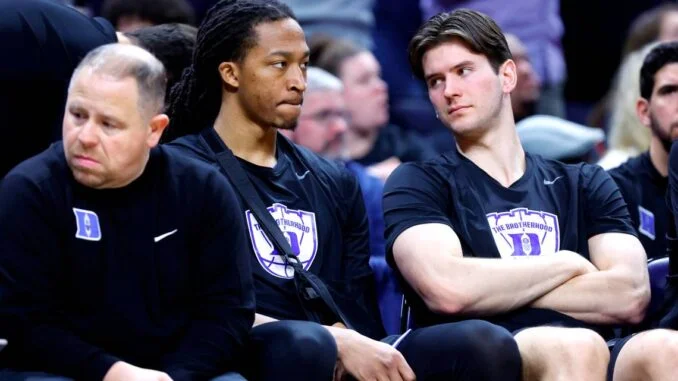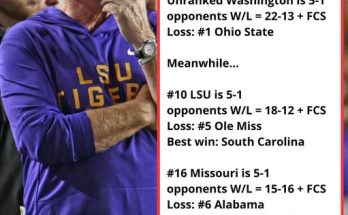Duke University’s basketball program has long been synonymous with excellence, producing top-tier talent and consistently competing at the highest levels of collegiate basketball. This season, the Blue Devils have faced a series of challenges, particularly concerning the health of their versatile forward, Maliq Brown. Brown’s recent shoulder injury has raised questions about his availability for the remainder of the season. Head coach Jon Scheyer has provided updates that shed light on Brown’s condition and the team’s plans moving forward.
Maliq Brown’s Impact on Duke Basketball
Maliq Brown, a 6-foot-9 junior forward, transferred to Duke from Syracuse ahead of the 2024-2025 season. Known for his defensive prowess and versatility, Brown quickly became an integral part of the Blue Devils’ rotation. His statistics, while modest, underscore his efficiency and importance to the team’s defensive schemes:On3
- Points per game: 2.5On3+5Reuters+5On3+5
- Rebounds per game: 4.1
- Assists per game: 1.6
- Steals per game: 1.4
- Field goal percentage: 62.9%On3+4On3+4Reuters+4
Beyond the numbers, Brown’s ability to guard multiple positions and his basketball IQ have been invaluable assets for Duke. His presence on the court often translates to a more cohesive and formidable defensive unit.
The Shoulder Injury: Details and Immediate Impact
On February 17, 2025, during a home game against Virginia, Brown suffered a dislocated left shoulder with 1:21 remaining in the first half. The injury was particularly concerning as it occurred without any contact, suggesting a potential underlying vulnerability. Brown immediately exited the game and did not return, finishing with two points, two assists, and one rebound in ten minutes of play.On3+3On3+3EssentiallySports+3
In the post-game press conference, Coach Jon Scheyer addressed the situation, stating, “Maliq, his shoulder dislocated.” He further elaborated on the uncertainty surrounding the injury’s severity, noting that imaging was scheduled to determine the extent of the damage. The immediate concern was not only the physical health of Brown but also the implications of his absence on the team’s dynamics.On3+1EssentiallySports+1On3+1
Medical Evaluation and Prognosis
Following the injury, Brown underwent a series of medical evaluations, including X-rays and MRIs, to assess the damage to his shoulder. The results were somewhat reassuring; there was no significant damage to the surrounding labrum, and the primary issue identified was soreness. This diagnosis suggests that once the pain subsides and Brown regains strength and mobility, he could potentially return to play.Duke Basketball Report
Coach Scheyer provided an update on Brown’s condition during an appearance on “The Field of 68” podcast, expressing optimism about his recovery:zagsblog.com+1Reuters+1zagsblog.com+1
“It’s just gonna take some time to see how he heals and recovers. We probably won’t know anything definitive this week. We’ll see about his status in the next week or so.” Reuters+1zagsblog.com+1Reuters+1
This cautious yet hopeful outlook indicates that while Brown’s injury is serious, there is a pathway for his return this season, contingent on his recovery progress.
Historical Context and Support Systems
Duke’s basketball program is renowned not only for its on-court success but also for its comprehensive support systems, particularly in sports medicine. The university’s affiliation with the Duke Medical Center ensures that athletes have access to top-tier medical care and rehabilitation facilities. This infrastructure is pivotal in facilitating efficient and effective recoveries from injuries.Duke Basketball Report
Adding a layer of personal insight, assistant coach Chris Carrawell experienced multiple shoulder dislocations during his freshman year at Duke. His firsthand experience with such injuries positions him as a valuable mentor for Brown during his rehabilitation process. Carrawell’s journey from injury to recovery and subsequent success can serve as both a blueprint and a source of motivation for Brown.Duke Basketball Report
Implications for the Team
Brown’s absence necessitates adjustments in the Blue Devils’ lineup and strategy. His defensive versatility and ability to guard multiple positions mean that other players will need to step up to fill the void. Freshman forward Khaman Maluach is one such player who may see increased minutes. Additionally, the coaching staff might explore smaller, non-traditional lineups to compensate for Brown’s absence. This approach could involve utilizing players like Cooper Flagg and Mason Gillis in roles that maximize their defensive strengths, even if they aren’t traditional centers.On3+3Duke Basketball Report+3Fayetteville Observer+3
The team’s depth will be tested, but Duke’s roster is replete with talent capable of rising to the occasion. The coaching staff’s ability to adapt and innovate will be crucial in navigating this period without Brown.
Looking Ahead: Will Brown Return This Season?
The timeline for Brown’s return remains uncertain and is largely dependent on his recovery trajectory. The absence of severe structural damage is a positive sign, but shoulder dislocations can be unpredictable, and rushing back prematurely could risk re-injury.
Coach Scheyer’s updates suggest a week-to-week evaluation process. The priority is ensuring that Brown is fully healed and confident in his physical condition before he returns to the court. Given the competitive nature of the ACC and the approaching postseason, having a healthy and ready Maliq Brown could significantly bolster Duke’s prospects.
Injuries are an inherent aspect of sports, testing a team’s resilience and adaptability. Maliq Brown’s shoulder injury presents a challenge for the Duke Blue Devils, but with a robust support system, strategic coaching, and the inherent depth of the roster, the team is well-equipped to navigate this period. Brown’s potential return this season remains a hopeful prospect, contingent on his recovery. As the season progresses, both fans and the team will eagerly anticipate updates, with the collective goal of seeing Brown back on the court, contributing to Duke’s storied basketball legacy.


